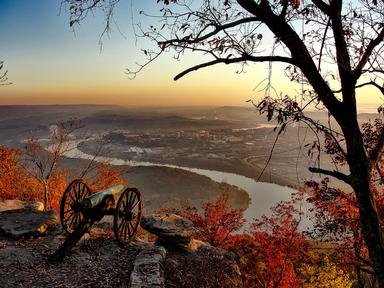Quiz Answer Key and Fun Facts
1. A Confederate general officer was murdered in his headquarters tent by a civilian in May of 1863. Who was the general and where is he buried?
2. CSA MG George Pickett's gravestone and monument at Hollywood Cemetery in Richmond, VA, is larger and more grandiose than that of Confederate President Jefferson Davis, in the same cemetery.
3. Two Civil War offspring of two very famous Americans are buried, among a large number of other Civil War notables, in Mount Auburn Cemetery in Cambridge, MA. Who are these two?
4. In addition to being from Virginia, and general officers in the Confederate Army, what did MG Robert Rodes, BG James Dearing, and LG Jubal Early have in common?
5. On Memorial Day of 1989, the Governor of Massachusetts honored the soldiers of which Massachusetts Civil War Regiment at the National Cemetery in Beaufort, SC?
6. Two profane, hard-drinking Confederate generals who were not afraid to let their opinions be known to superiors are buried in Tabernacle Cemetery in Cokesbury, SC. Who are these brothers-in-law?
7. Who is the only cabinet member of the Confederate States of America's government buried outside the United States?
8. Woodlawn Cemetery in the Bronx, NY, was the final resting place of the famous and wealthy of New York, and a large number of prominent Civil War figures are buried there. Which of the following buried at Woodlawn was NOT a Union general officer?
9. Two of the best known Union generals in the Civil War are buried in two towns in Pennsylvania less than 75 miles apart. They are:
10. The most of what famous writer's adult life was spent writing on the Confederacy, and is buried in the Valhalla of Confederate Cemeteries, Hollywood Cemetery in Richmond, VA, surrounded by Civil War notables?
11. When "Fighting Joe" Hooker was in the hospital recovering from his foot wound after the Battle of Antietam, which cabinet member with burning presidential aspirations visited him, and years later was buried about 100 feet from him in Spring Grove Cemetery, Cincinnati, OH?
12. Within the crypt in Grant's Tomb in New York City, bronze busts of five Union general officers surround the sarcophagi of Grant and his wife. The busts are of which of the following:
13. Lewis Armistead's grave marker in a tablet mounted on a wall in St. Paul's Episcopal Churchyard cemetery in downtown Baltimore is in error as to his date of death. It states that he died at Gettysburg on July 3, 1863. When did he actually die?
14. Many cemeteries contain remains of soldiers from both sides. What two high-ranking opposing generals are buried close to each other in Bellefontaine Cemetery in St. Louis, MO?
15. Which Union general officer who played a prominent role in one of the major Union victories in the War and was angrily relieved of command two years later is buried in Island Cemetery in Newport, RI?
Source: Author
gizmo61
This quiz was reviewed by FunTrivia editor
bloomsby before going online.
Any errors found in FunTrivia content are routinely corrected through our feedback system.
